
How to leverage in-app marketing to grow your business in 2023
Main illustration: Olenka Malarecka
All your messaging is marketing, both before and after the sale. So in-app marketing is especially key to engaging and retaining the users you’ve worked so hard to acquire.
This guide is for marketers interested in learning more about the tools of the trade and the various types of in-app marketing – and the ways to use them.
What is in-app marketing?
In-app marketing is any message or marketing campaign that’s designed to be displayed to your customers while they’re inside and actively using your app. In-app marketing allows businesses to use real-time and personalized messages to help engage, retain and upsell customers to new products.
“Activating new users is far more than showing them how to use an app”
Common use cases for in-app marketing include onboarding new users, introducing new features and collecting user feedback.
Why you need an in-app marketing strategy
If you don’t have a strategy for reaching out to your existing users, you may lose them faster than you can onboard new ones, or you may over-message them, which is just as damaging. Mixpanel’s study of 1.3 billion users found that the average retention rate for web-based apps is only about 10%.
Whatever your app does to make your users’ lives easier, here are three ways an in-app marketing strategy can help you increase user acquisition.
1. Guide your user’s experience
Activating new users is far more than showing them how to use an app. It’s also about unlocking your app’s value for your user, and convincing them that this value will last for months or years.
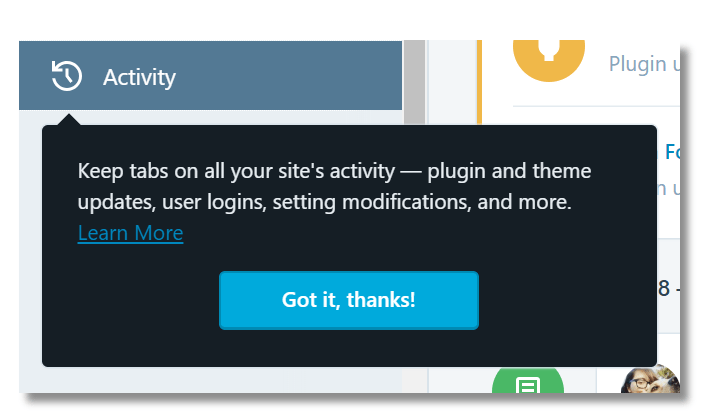
An app is valuable only if people know how to use it. Walk new users through the basics, even if it seems obvious to you.
A great in-app user experience includes:
- An onboarding experience that makes it easy to get started
- Re-onboarding for inactive users coming back after a break
- Helpful explanations or tutorials of new features
- Quick and contextual access to knowledge base content or customer support
- Suggestions for high-impact activity (i.e., showing users how to get even more value)
2. Capture user feedback
You can use in-app behavioral analytics to measure implicit feedback. When users start tasks multiple times without finishing, or repeatedly tap the same buttons over and over again, they’re probably frustrated or confused.
You can also request explicit feedback using in-app prompts. Apps can be really robust, meaning there is so much great functionality that it’s easy for app developers to overlook minor annoyances. Your users, however, won’t feel the same way — those little annoyances can drive them away for good.
Collecting feedback signals that you care about their experience. If you go a step further and incorporate this feedback into the app, use in-app messages or notifications to let them know.
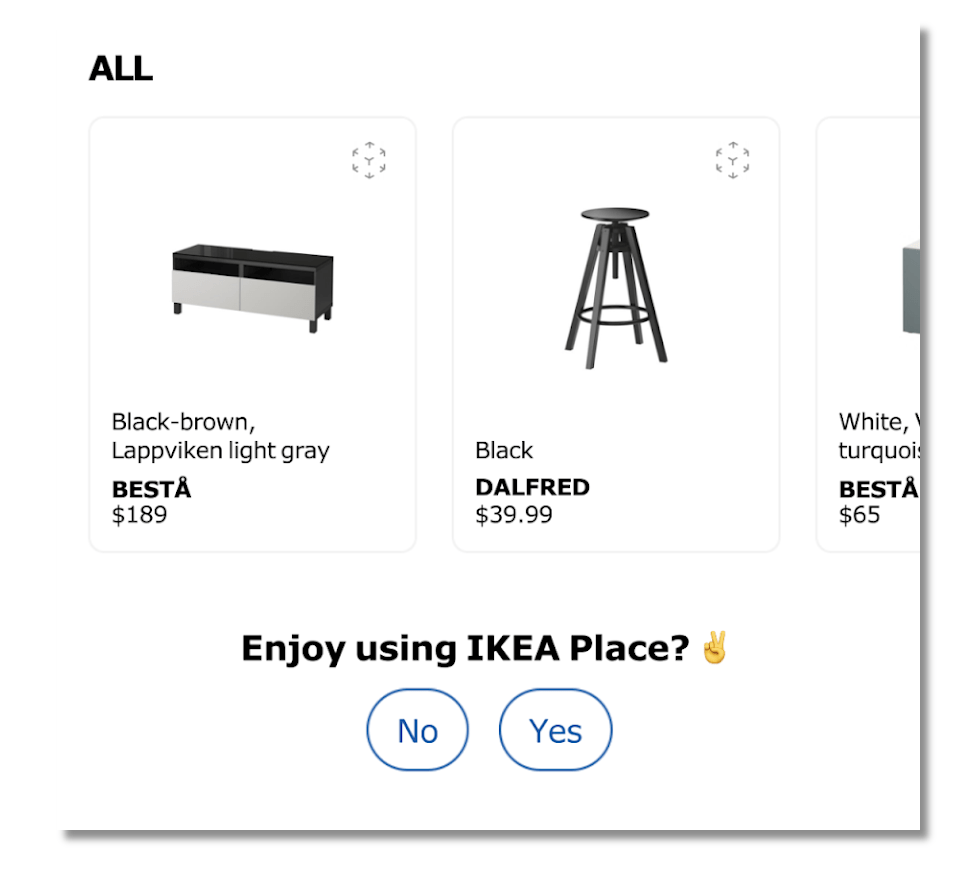
Use simple feedback mechanisms to encourage users to provide more of it.
Make it easy for users to respond by giving them simple choices, like a numerical rating system, thumbs-up or thumbs-down, or smiling or frowning emoji. One tap should be enough to give you the information you need.
3. Collect positive reviews
Positive online reviews can drive more traffic and potential users to your app, but only a small percentage of users will voluntarily leave positive, unsolicited feedback on review sites or marketplaces. You can use in-app prompts to ask for these reviews.
Aim to trigger these prompts while a user is clearly enjoying the app. If, for example, a user has logged in every day for a week, it’s a good time to ask for an app review. Reviews on the app store can often be much more influential to potential users than third-party review sites or reviews posted on social media.
 Ask active users to rate your app while they are highly engaged
Ask active users to rate your app while they are highly engaged
5 types of in-app marketing
There are all kinds of ways to build marketing into your app, including great copy and great design. The techniques below are well-established ways to accelerate behavior and guide users toward positive outcomes.
1. In-app notifications
When you think of notifications for a mobile app, you probably think of push notifications. They are widely used and proven to be effective at increasing mobile app launches. In fact, thousands of new apps in Apple’s app store and the Google play store use push notifications frequently.
But unlike push notifications, in-app notifications can provide users with a quick and obvious action to take. Users also find them far less intrusive and more helpful, since they’ve already opened the app when they show up.
The value of in-app notifications is twofold:
- Notifications can be used to build habitual behavior. Think of a Pinterest user opening the app and immediately checking to see who repinned their content.
- Most app users don’t experience all the features an app has to offer. In-app notifications can drive users deeper into an app by showing them new or unused features.
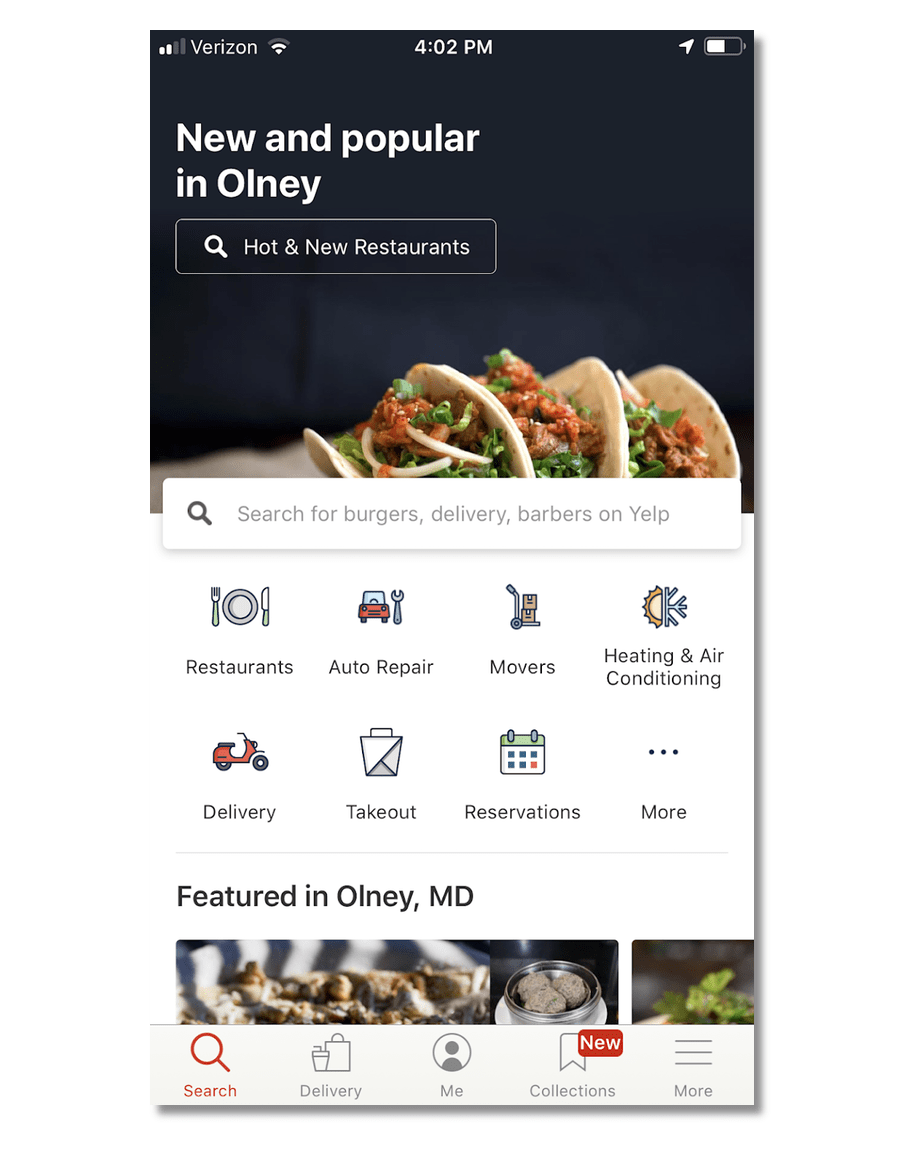
See the red “New” badge in the screenshot above? It’s designed to show users a new feature, but it also draws the user in as soon as they open the app. It prompts immediate action, meaning users have a clear place to tap. Without a suggestion for immediate action, users could lose interest and leave the app.
You can also use in-app notifications to:
- Update users about activity since their last visit
- Point out new features or updates
- Suggest people, places, or things to follow
As with all notifications, you should run some tests to figure out how often they should be used. You want to deploy notifications often enough that users find value in them, but not so often that it irritates them.
2. Tooltips
Tooltips are the overlays that show users where to navigate or how to use an app. While tooltips are most often used to introduce new users to an app, they can also be used to encourage a habitual behavior or direct users to new or underused features.

You probably try to make your app as easy as possible to use, but that doesn’t eliminate the need for tutorials and walkthroughs. Tooltips are a good way to make easy-to-use apps even easier. Use them to:
- Show users where to tap
- Create simple tutorials
- Explain where to find features, configure settings, etc.
3. Splash pages
A splash page is the equivalent of a full-screen pop-up. It requires the user to take action, whether they are responding to a call to action or opting out.
Splash pages are useful for pre-empting system prompts. In the example below, the app informs the user that it’s going to ask for permission to send notifications, and explains why allowing notifications is beneficial.
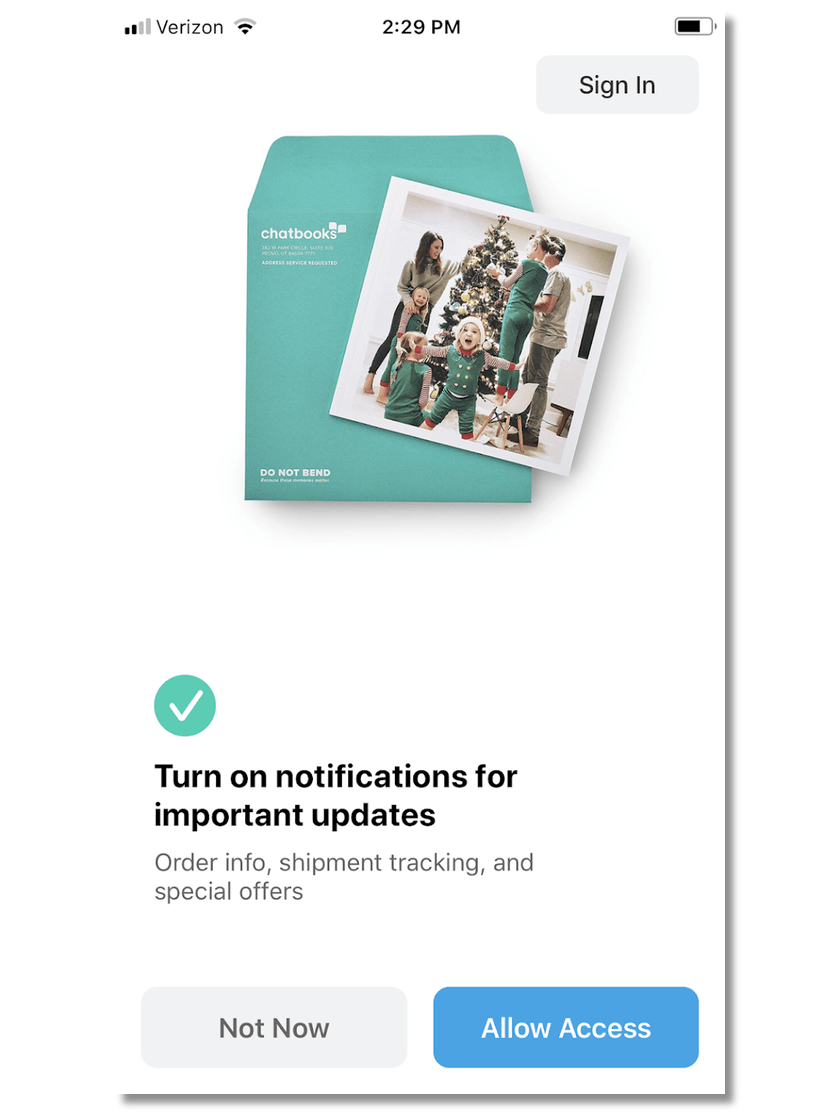
This works for other system prompts as well, like asking for access to the photo library, camera, microphone, and location. It asks the user to make a decision, and gives them the context they need to allow it without feeling uncertain or unsafe.
4. In-app messages
Many apps take advantage of in-app messages to communicate with their users. In-app notifications can drive users to an inbox, where they can get long-form messages from the app maker.
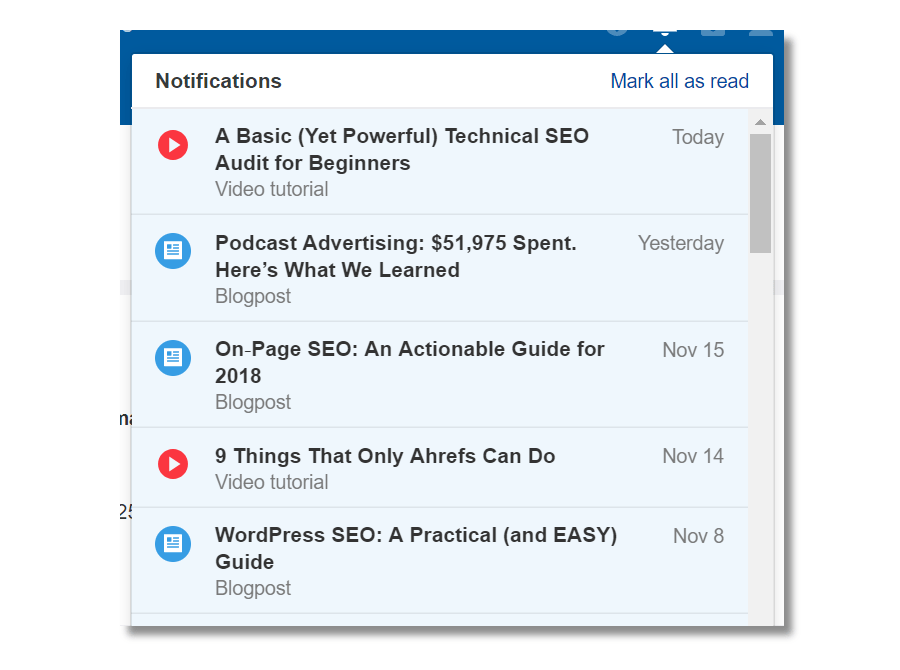
In-app messages can be used to
- Send promotions to users (“50% off until tomorrow”)
- Ask users to take an action (e.g., write a review, read a blog post, start a meditation challenge)
- Remind users to finish a task (“You’re almost done!”)
- Provide updates (“74 people read your review”)
While in-app messages are often used for promotion, they can also be used for two-way communication. You can do this at scale by sending surveys or asking for feedback, or you can send one-off messages to check in with high-value users — or those who might be about to churn.
5. Modals
In-app modals are full window overlays that temporarily overtake the user’s behavior, and require interaction to be dismissed. Carefully placed modals can drive sales, subscriptions, or upgrades to higher tier plans.

Just like notifications, modal windows should be used carefully. You should make them timely and personalized to avoid annoying users. You might try them to:
- Upgrade users to a paid subscription
- Ask users to invite friends
- Suggest that the user creates an account or logs in
- Tell users about new features, products or promotions
Modals are incredibly useful mobile marketing tools when used correctly. Like all in-app marketing, plan to run tests on your modal windows to optimize their timing, messaging, and calls to action.
3 examples of an in-app marketing campaign
In practice, the different types of in-app marketing work together to drive users toward desired behaviors. Here are a few real examples pulled from highly successful apps.
1. Onboarding users at the right learning level
Online language learning platform Duolingo has a simple and easy onboarding campaign that gets new users engaged and learning quickly, and personalizes their learning experience within the first few minutes. This is known as “progressive disclosure”.
Rather than asking learners to sign up right away, they’re first asked to choose a language:
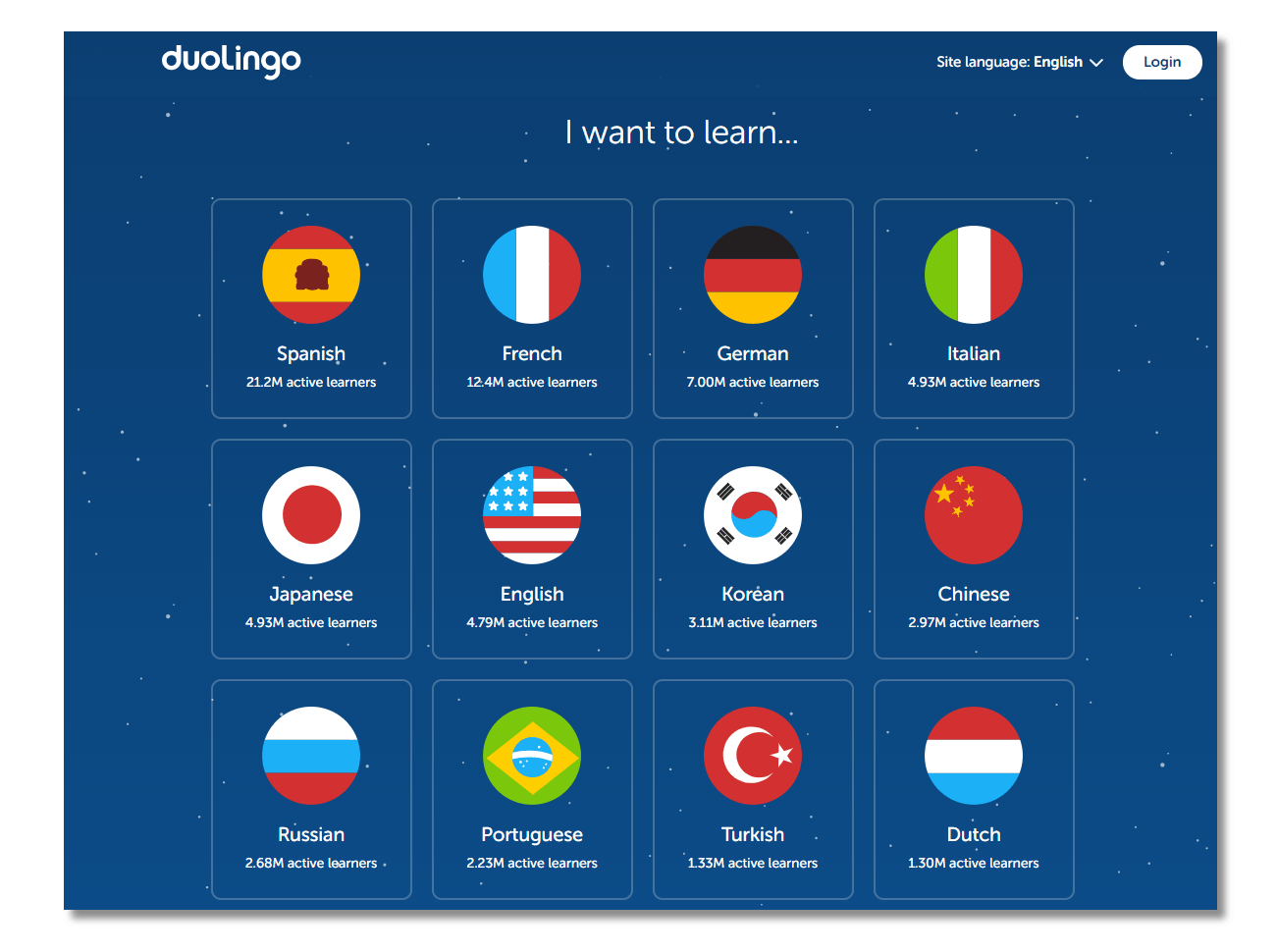
Then how much time they want to spend learning each day, from just a few minutes (a small commitment, easy to make) to 20 minutes or more.
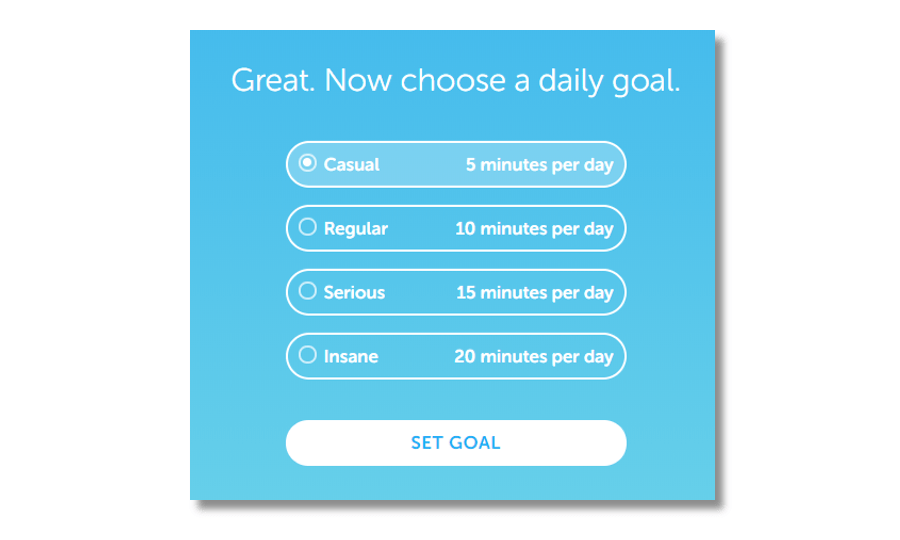
The user is then presented with the option to choose their own learning level, rather than being thrown immediately into beginner lessons. The app’s “placement tests” ensure that new users start learning truly new words and phrases, keeping them engaged – and less likely to leave for another app.
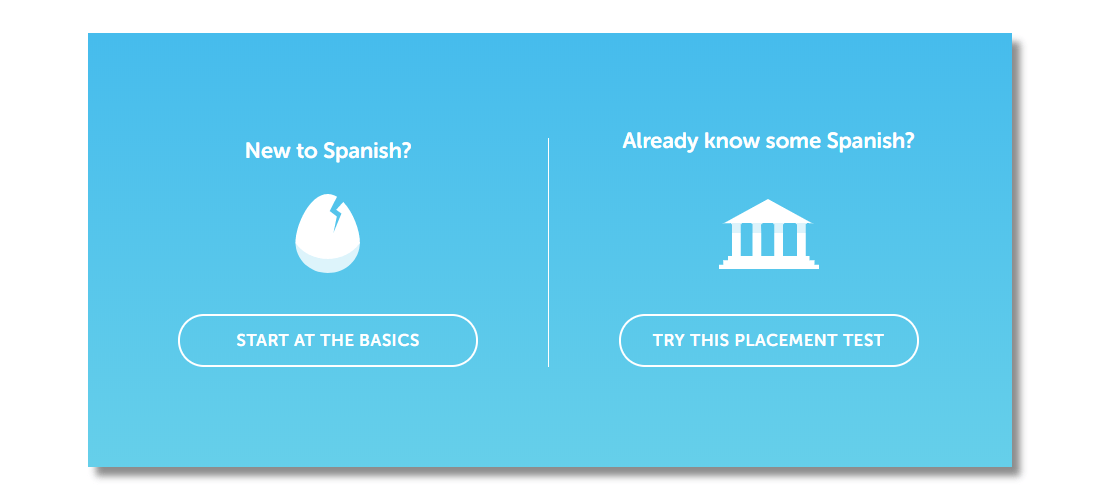
In this way, you can restrict the amount of complexity the customer is exposed to as they onboard.
2. Utilizing helpful in-app tooltips and modals
Discord, a “Slack for gamers,” doesn’t assume that every new user of its software knows how to chat, @mention, use emoji, or customize their profile. Instead, they show new users prominent tooltips, pop-ups, and modal windows to help get them chatting in channels as quickly as possible.

While inside the app, users will see this prominent orange exclamation mark near certain features. Clicking near the icon will trigger a pop-up window explaining a specific Discord feature, how it’s used, and where you can go to adjust the settings further.

Users can also “skip the tips” if they’re familiar with Discord’s functions, or simply want to explore at their own pace without prompts interrupting their setup process.
The app also uses modal windows to ask for permissions, or occasionally display important system notifications. Below, you’ll see how Discord takes over the user’s entire screen to ask for permission to download a desktop application that will enable the Push to Talk function.
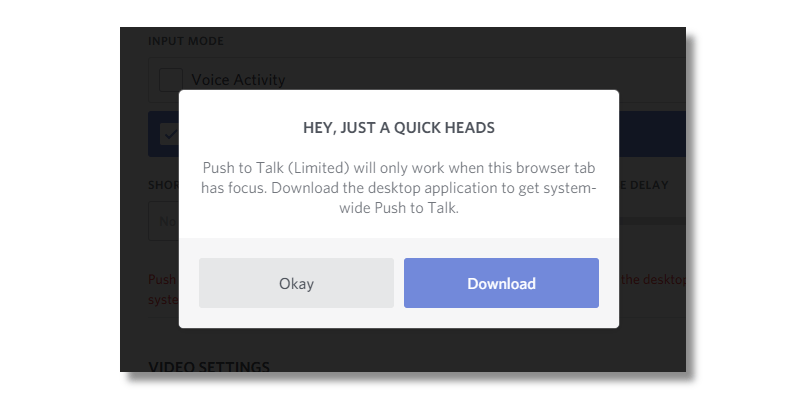
With tooltips and pop-ups like these, Discord’s users get a crystal clear understanding of how they can use the app, and when they need to take additional steps to make something work the way they’d like it to.
3. Pushing users toward an “aha” moment
An “aha” moment is the instant the value of your product becomes crystal clear to the user.
For the mobile app Hopper, that moment is when users realize they can automatically “watch” prices for hotels and flights. That moment makes it very clear that setting up an app is well worth the peace of mind, not to mention the savings, that it offers.
Hopper highlights the watch button for new users. It’s simple but effective. Once a user taps that button, they have skin in the game and are much more likely to use the app more.
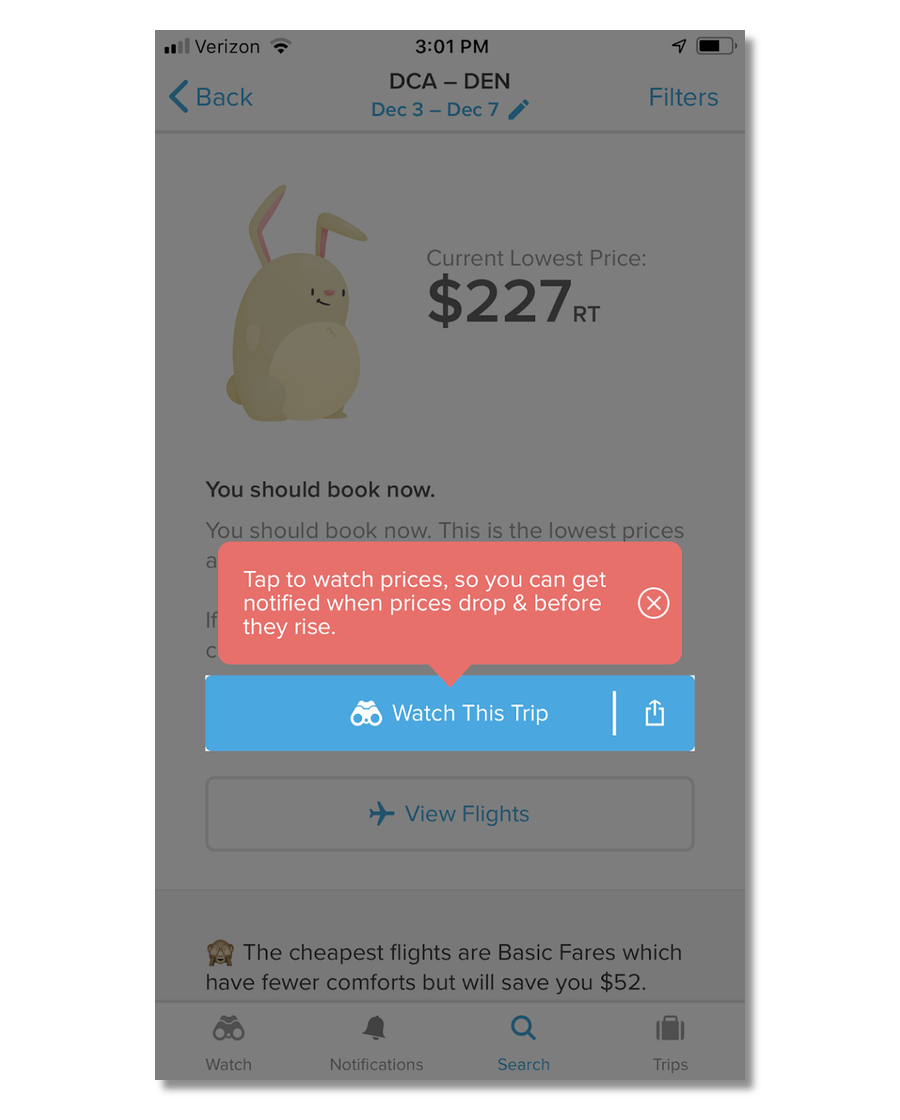
How to set up your in-app marketing
Ready to get started? Here are the three steps you’ll need to take to plan and implement in-app marketing.
Step 1: Define your strategy
Find some of your best users – the ones who have been around for a while, regularly engage with your app, or have upgraded to a paid plan. What behaviors did they take early on? Does anything stand out? This is where you should begin defining your in-app marketing strategy.
Here are some questions to help you formulate a plan:
- What behaviors do we want to encourage?
- What’s your product’s “aha” moment?
- How quickly should people complete those behaviors?
- How often do the best users engage?
- How many notifications is too many?
- Are there certain places in the app where people get stuck?
- Does our onboarding flow get new users into the app quickly and efficiently?
- Are there in-app marketing tactics that we’ve overlooked?
Keep in mind that a well-rounded strategy should account for onboarding, engagement and retention.
Step 2: Choose the right tools
To put in-app marketing into practice, you will need a few tools. First, you’ll want to choose an analytics platform. Amplitude, Mixpanel, AppsFlyer and Localytics are popular choices.
Each of these tools requires that a tracking code be integrated into your app. You may want to do this with Segment, a tool that streamlines data collection inside apps. Once integrated, Segment will allow you to easily set up tools for notifications, life-cycle email, customer support, and more.
You can build your own splash pages, tooltips, inboxes or modals, or you can use a tool like Leanplum, Urban Airship, or Intercom, of course. (All three of these tools also integrate with Segment.)
Step 3: Test, test, test
We suggest you choose an analytics tool first because testing is so important. You’ll want detailed metrics on behavior in your app, and you’ll also want the ability to run A/B tests.
Some of the tools mentioned above offer A/B testing features, but you may want to check out a tool like Apptimize or Optimizely that is built specifically for mobile A/B testing.
Get started on your own in-app marketing
With a solid in-app marketing strategy, you can keep your users happy, engaged, and more likely to be retained long-term. Follow these guidelines to create a thoughtful strategy for your own app, from onboarding to collecting app reviews.
If you’re interested in reading more about onboarding, engagement growth and marketing, check out some of our books:
Intercom on Customer Engagement
Intercom on Product Management
Intercom on Marketing
Intercom on Onboarding
The Growth Handbook
Frequently Asked Questions about in-app marketing







